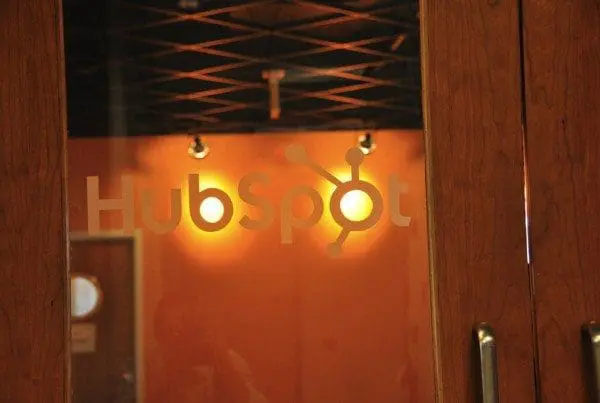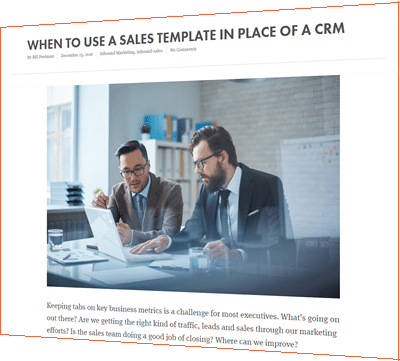 We’re big proponents of marketing automation software here at Alaniz Marketing – specifically HubSpot. We use HubSpot each day to help drive leads for our customer – and our own business – through blogs, emails, lead nurturing, social media, SEO, and premium content offers. And while we like to share the successes we’ve had using automated marketing we also make sure the people we talk to understand that just because you implement an automation tool in your organization, it doesn’t guarantee success.
We’re big proponents of marketing automation software here at Alaniz Marketing – specifically HubSpot. We use HubSpot each day to help drive leads for our customer – and our own business – through blogs, emails, lead nurturing, social media, SEO, and premium content offers. And while we like to share the successes we’ve had using automated marketing we also make sure the people we talk to understand that just because you implement an automation tool in your organization, it doesn’t guarantee success.
If you have already purchased HubSpot or another marketing automation tool and are not seeing the results you expected, you are not alone. We have found through work with our customers that there are 5 main reasones why automated marketing doesn’t provide the ROI you expected as well as some steps you can take to reap the positive benefits of using your automation tool.
Marketing automation is not a quick fix
A common misconception about marketing automation software, is that once you impliment it into your organization it will completely take over your marketing functions. While automation can save you money and other resources, when it comes to the getting the most out of your automation software, you must also have an inbound marketing strategy and the right team in place to implement it. Without it, your marketing efforts will be a waste of time, rendering the software completely under-utilised and possibly irrelevant.
You must have a flow of organic leads
Just because you have purchased an automation platform it doesn’t mean you have enough contacts to market to. In order to properly set up lead nurturing campaigns you need a steady organic lead flow coming through your marketing funnel. Many times before you start the process of lead nurturing you need to start create new contacts to market to. One way to increase the contacts in your database is through blogging. You can capture data from blogs by:
- Getting people to subscribe to your blog
- Including a CTA that promotes relevant engaging content.
- The CTA is then attached to a landing page with a form.
- Once enough visitors fill out your forms you can begin to segment those names into lists and start your lead nurturing campaings.
Another way to drive visitorsin order to capture data is by promoting your blogs and offers on social media. Again, make sure you have a CTA at the bottom of each blog post or a landing page that drives people to fill out forms.
One more important tool in driving organic leads is SEO. To do this you must know your industry keywords. HubSpot has a keywords tool that shows you monthly searches, rank, difficulty, etc. By optimizing your keywords throughout blogs, social media, your website, and landing pages you will start to see a steady flow of organic traffic to market to.
Automation is not a substitute for solid strategies or processes
No automation in the world, no matter how advanced, can be a substitute for having a solid strategy and processes in place. Often times organizations using automation for inbound marketing are overwhelmed with all the moving parts it takes to make it successful. Creating a strategy that focuses on one buyer persona with relevent content and creating well-developed processes for all the tasks in your auomated system will save you time and drive results.
Automation is not just for email marketing
In the past, automated marketing was all about sending emails. Marketers created their message, chose a time, and then sent it to their contacts. Those contacts may or may not have been segmented by buyer persona. Although email is still a key element in inbound marketing it is not the only channel that can be utilized. Today, social media is on the rise and automation software have made it possible to monitor, publish, and engage on several social media from one platform. One of my personal favorite tools in HubSpot is the Twitter bulk upload tool which enables you to create, schedule, send all of your Tweets.
If you have marketing automation and you want to make the most out of it, make sure you understand all the different bells and whistles that your automation has available including;
- landing pages,
- keyword tools,
- A/B testing,
- social media,
- analytics,
- web design,
- blogs,
- lead nurturing,
- workflows,
- CTAs, and the list goes on and on.
Your automation tool will only perform as well as your most experienced user. If you have a new person on board or your current marketing team needs a refresher check and see if your automation tool vendor has a learning area available.
Lack of sales and marketing alignment
Sales and marketing often times have contentious relationships and it can feel like they are on opposing teams. Automation can help your organization by getting these two teams on the same page, working with the same set of data and sharing lead information in real time. But before this happens sales and marketing must work together on creating buyer personas, what constitutes an MQL and SQL, and what happens to a lead once it reaches those levels.
In short, automation is a tool, like any other tool you may use to get the job done. If you aren’t getting the ROI you want, make sure you have a clearly defined strategy and marketing and sales process, coupled with content that resonates with your buyers. Having this in place will position your organization to take advantage of the power an automation tool provides when they are working in tandem towards the same goal. More sales!
Related Resources:
 16 Ways to Save Money On HubSpot in 2023 – Secret Discounts, Savings, and Freebies
16 Ways to Save Money On HubSpot in 2023 – Secret Discounts, Savings, and Freebies
16 Ways to Save Money On HubSpot in 2023 – Secret Discounts, Savings, and Freebies
 CallRail Review: My Experience Exploring Call Tracking for HubSpot, SalesForce, Google Analytics
CallRail Review: My Experience Exploring Call Tracking for HubSpot, SalesForce, Google Analytics





